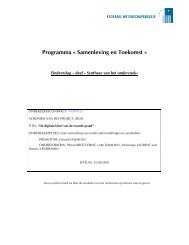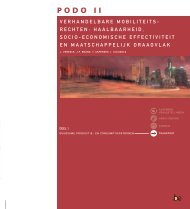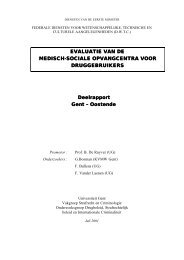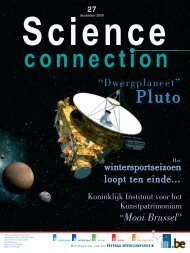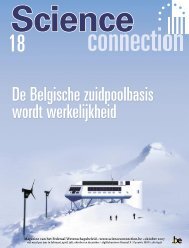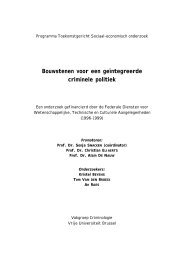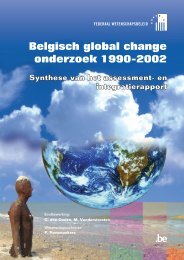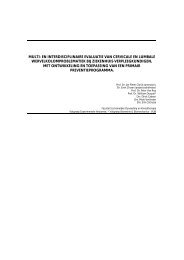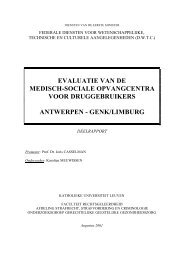chapter 3 inventory of local food systems
chapter 3 inventory of local food systems
chapter 3 inventory of local food systems
You also want an ePaper? Increase the reach of your titles
YUMPU automatically turns print PDFs into web optimized ePapers that Google loves.
Project CP/59 - “Instruments and institutions to develop <strong>local</strong> <strong>food</strong> <strong>systems</strong>”<br />
(this however was not the case when there was not enough <strong>food</strong> for all or where there is<br />
a general deficiency <strong>of</strong> certain micronutrients) (Halweil, 2002). Food specialists argue<br />
that an important part <strong>of</strong> the increase in obesity and related diseases around the world<br />
can be attributed to the spread <strong>of</strong> a distinctly non-<strong>local</strong> diet, that is the fast-<strong>food</strong> diet that<br />
originates in the United States and is defined by large amounts <strong>of</strong> meat, fired <strong>food</strong>, sugar<br />
and highly processed items.<br />
1.2.2.5. Ethnocentrism<br />
Ethnocentrism is a complex <strong>of</strong> attitudes whereby a positive attitude towards the in-group<br />
is linked to a negative attitude towards out-groups. It arises when indigineous and<br />
foreign groups compete for scarce goods (Jacobs et al., 2001). For example,<br />
Vandermersch and Mathijs (2004) demonstrate that consumers do not mention the<br />
origin as an explicit reason for purchase, but that consumers with ethnocentric motives<br />
are more inclined to buy <strong>local</strong> apple varieties.<br />
1.2.3. Factors at producer level<br />
Farmers already active in LFS advise their colleague farmers to contact their colleague<br />
growers because everyone can learn a lot from the experiences <strong>of</strong> the others, on the<br />
growth-technical field as well as on the marketing field (Innovation support point for<br />
agriculture and rural regions – Innovatiesteunpunt voor landbouw en platteland, 2003,<br />
p. 14). It appears from here that among other things the exchange <strong>of</strong> knowledge at<br />
producers’ level can be an important stimulus to participate in a <strong>food</strong> network. LFS can<br />
further <strong>of</strong>fer common solutions to their members concerning cost <strong>of</strong> investments, and<br />
concerning legislation.<br />
1.2.3.1. Transaction costs<br />
Transaction costs are defined as the costs linked to the organisation <strong>of</strong> the exchange<br />
between different partners (Verhaegen and Van Huylenbroeck, 2001). They concern the<br />
information costs linked to building knowledge, needed for the production and<br />
marketing <strong>of</strong> a specific product. Furthermore, also the interaction costs, needed to reach<br />
an agreement with a specific partner, are part <strong>of</strong> the transaction costs. A third cost item<br />
to be taken into account concerns the control <strong>of</strong> living up to agreements made.<br />
Innovation in the field <strong>of</strong> organisation forms is also possible, provided the private<br />
transaction costs can be sufficiently reduced that way. When a common action is<br />
undertaken, these costs can be carried in group and individual transaction costs seem to<br />
decrease. The search for new and trustworthy partners within the conventional market<br />
system for instance, brings along important costs (Réviron et al., 2004). Here too, trust is<br />
an important factor. An investment in hybrid organisations leads to mutual dependence.<br />
Hybride organisations emerge because partners see that they can pr<strong>of</strong>it from joint<br />
investements. By accepting these, they also accept this mutual dependence. Such<br />
confidence in the colleagues who work in a similar way <strong>of</strong>fers extra space for the<br />
participating players to invest in other activities.<br />
SPSD II - Part I - Sustainable production and consumption patterns - Agro-Food 15



